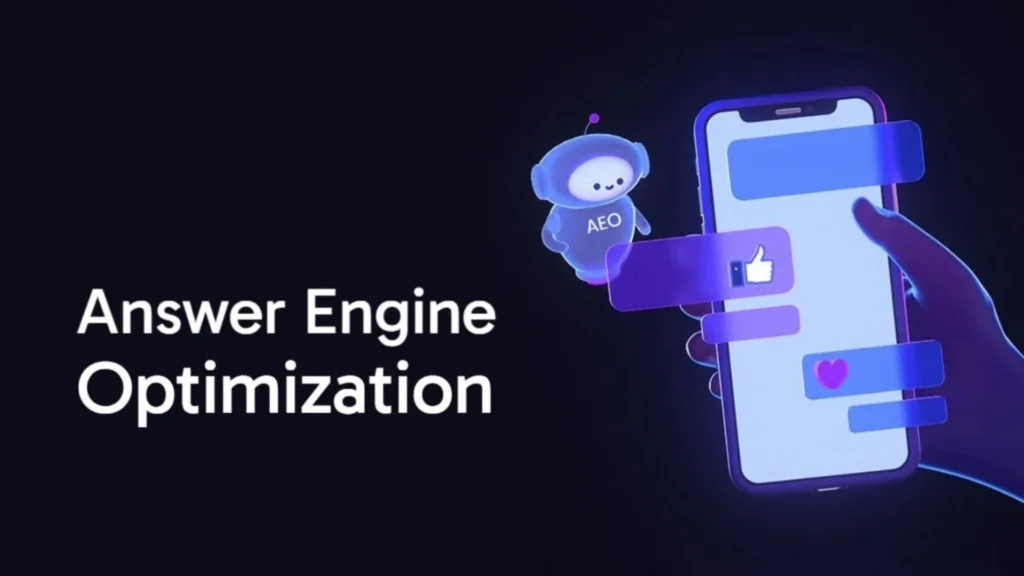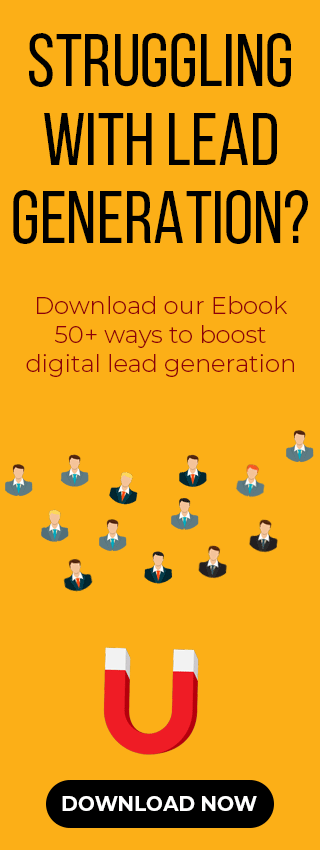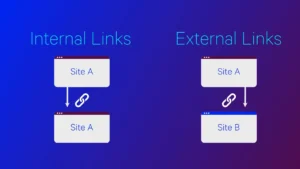Search is shifting from links to answers. People ask questions and expect a direct reply. Often, they get it on the results page. Sometimes a voice or chat assistant reads it out. If your page is not the answer, you lose that moment. That is why Answer Engine Optimisation (AEO) matters in 2025. It helps your content become the response that users see first. CXL and others describe AEO as the practice of shaping content so engines can deliver your page as the direct answer.
Google, meanwhile, keeps rolling out AI Overviews. These summaries sit above the links and reach huge audiences. Google said AI Overviews expanded to 100+ countries with more than a billion monthly users by late 2024. So the answer box is no longer niche. It is mainstream. Your brand needs to show up there.
What is Answer Engine Optimisation (AEO)?
AEO means building pages that answer real questions in a way machines can extract and show. It is about short, clear replies. It is about the structure that maps to how people ask. It is also about markup that helps systems parse your content. This includes classic snippets, voice replies, and now AI-style summaries. Guides from CXL, Surfer, and SEO.com all point to the same idea. Be the answer, not just a link.
How AEO relates to SEO
SEO aims for clicks and rankings. AEO aims for answer placement and citations. The two work together. You still need crawlability, speed, and relevance. You add question-first writing and markup so engines can lift a clean reply. This shift also matches how AI engines like ChatGPT, Perplexity, and Copilot cite sources. If your answer is clear, you can earn those citations. SEO.com frames AEO exactly this way for AI engines.
The 2025 context you cannot ignore
Three changes shape AEO in 2025.
- AI Overviews are big. Google rolled them out in the US in May 2024. By October 2024, they reached 100+ countries. Google said it would get over a billion users by year’s end. Your answers can surface there. That is the new front door for many queries.
- Some rich results changed, and Google deprecated How-To rich results. FAQ rich results are now limited and mostly show for well-known government and health sites. So you still use schema for clarity, but you do not rely on those two SERP decorations. You focus on extracting answers that power AI and snippets.
- Brands talk AEO. Agencies and platforms discuss AEO as a strategic layer. Modifyed’s post says it well. “Don’t just rank. Be the answer.” That is the mindset we use here.
Core signals engines use to find answers
From the sources and from what we see in search engines, we prefer pages that are:
- Direct: put a short answer near the top.
- Structured: use question headings and step lists.
- Marked up: add structured data to clarify the Q&A.
- Trusted: show expertise and cite reliable sources.
- Fresh: update facts that go out of date.
- Fast and clean: keep pages simple and crawlable.
CXL, Surfer, and SEO.com emphasize clear answers, structure, and schema for this purpose. In AI Overviews, Google also added more visible links inside the overview text. That rewards sources with precise answers and clear context.
AEO playbook: step by step
1) Map real questions
Start with how people actually ask. Many people ask in Search Console reports or customer emails what is the best email marketing software to use for growing a small business. Pick a main question for the page. Use the rest in subheads and an FAQ block. CXL and Surfer stress question clusters and answer-first content. This turns vague topics into concrete answers.
2) Write the answer first
Make your H2 the exact question. Then give a short answer in one to four short sentences. Keep it factual. After that, add detail, examples, and steps. This makes your page helpful for users and extractable for engines. Surfer and CXL push this “answer first, expand later” pattern.
3) Use simple, spoken language
Write like you talk. Use short lines. One idea per sentence. Avoid long clauses. AI Overviews and voice systems do better with plain speech. Your answer should make sense when read out loud. This matches how Google describes the goal of helpful overviews and how users behave with voice and chat.
4) Add structured data the right way
Use Article and FAQPage where it fits. Do not rely on How-To rich results, since Google deprecated them. Use FAQ wisely because broad FAQ rich results are limited. The point is not just the visual enhancement. The point is machine clarity for Q&A pairs across engines and assistants. Follow Google’s current guidance and remember the scope limits.
5) Tidy the technical base
Keep pages fast and crawlable. Use a clear H1 to H3 hierarchy. Use canonical tags correctly. Avoid heavy scripts that slow down mobile. These basics keep your content visible to crawlers and also improve user satisfaction. All three core sources list clean HTML and speed as foundations.
6) Build off-site trust
Keep your brand on trusted sites. Earn mentions and links. Maintain accurate listings. Reviews help with local intent. SEO.com highlights the role of authority and backlinks for AEO, because answer engines still need reliable sources.
7) Optimise for AI Overviews and answer engines
Write clear summaries with sources. Use lists and small tables for key facts. Expect your content to appear with in-line links inside an overview block. Google said it has made these links more prominent in AI Overviews since mid-2024. That means your formatting choices can influence which lines get linked.
Page format that works in 2025
Use this layout on core pages:
- H1: the main topic and intent.
- Intro: one short paragraph that frames the question.
- H2: the exact question.
- Answer block: 30–60 words with the direct answer.
- Bullets or steps: quick scan list.
- Expanded section: explain the why, show examples, add data.
- FAQ: two to five short related questions with crisp answers, marked up with FAQPage where relevant.
Content types that win
- FAQs: Frequently Asked Questions with Quick Answers.
- How-to style explanations that don’t rely on the old How-To rich result. Use steps and images on the page even if the badge is gone.
- Short definitions for “what is” queries.
- Comparison tables for product or plan choices.
Surfer and CXL both encourage these formats because machines parse them well. They also cater to users seeking rapid clarity.
Two live examples to copy
Example 1: SaaS feature explainer
- H2: “What is role-based access control in our app?”
- Short answer: one paragraph that defines it.
- Steps: three bullets on how to set it up.
- Expanded section: security benefits and two use cases.
- FAQ: “Can I assign multiple roles?” “How do I audit changes?”
This structure can earn a snippet. It can also serve as a source link within AI Overviews, given its concise definition and prominent placement. Google’s notes on in-line links in AI Overviews support that approach.
Example 2: Local service query
- H2: “How much does a 2BHK deep clean cost in Mumbai?”
- Short answer with a range and lead time.
- List of what is included.
- Expanded section with time estimate, add-ons, and a booking link.
- FAQ on chemicals, crew size, and slots.
Clear numbers and scope help assistants pick up the price range as the answer. This aligns with AEO’s focus on direct answers and trust.
Common mistakes to avoid
- Burying the key answer deep in text.
- Writing long, vague sentences that confuse parsers.
- Stuffing the page with keywords instead of clear phrasing.
- Relying on old SERP features that no longer show for most sites, like How-To, or broad FAQ visuals.
- Ignoring citations and external sources.
These warnings reflect Google’s changes and the shift to AI summaries.
Technical checklist for 2025
- Crawlable pages and simple HTML.
- Mobile speed and stable layout.
- Clean H1-H3 hierarchy and logical anchors.
- Canonical and indexability checks.
- Structured data for Article and FAQPage, where it makes sense.
- No reliance on How-To rich results.
- Internal links to related authority pages.
- External citations to trusted sources where facts matter.
Measuring AEO success
Classic SEO KPIs still matter, yet AEO needs extra views.
- Featured snippet wins for target questions.
- Impressions for question phrases, even when CTR is low.
- Citations inside AI Overviews and answer engines, where you can spot them. Google said it now shows more prominent in-line links in AI Overviews, which helps you track visibility and clicks.
- Branded search lift after publishing answer-first content.
- Assisted conversions tied to pages that win answers.
Quick “ship it” workflow for teams
- Pull the top 20 real questions from Search Console and customer chats.
- Draft answer-first pages using the format above.
- Add a schema that reflects the Q&A.
- Publish and watch impressions, snippets, and overview citations.
- Update weak answers within four to eight weeks. This turns AEO from a buzzword into a weekly habit backed by fresh Google context.
Conclusion
Search now opens with answers. Answer Engine Optimisation (AEO) is how you show up there. Put the answer first. Use clear questions as headings. Add structure and schema for clarity. Keep your site fast and clean. Support your claims with sources. Track visibility beyond clicks. Google’s AI Overviews reach huge audiences and now show more prominent links inside the summaries. That is your chance to earn attention at the very top. Use this playbook and make your brand the answer in 2025.
FAQs
What is the fastest way to start with AEO?
Pick one page. Turn its main subhead into the exact question. Write a short answer under it. Add a few steps and a small FAQ at the end. Publish and track impressions and snippet wins for that question. CXL and Surfer both back this answer-first pattern.
Should I still use FAQ and How-To schema?
Use the FAQ page where it makes sense. Do not expect broad FAQ visuals, though. Google limits those to a narrow set of authoritative sites. Do not rely on How-To rich results because they are deprecated. Use clear steps on the page anyway, since AI and snippets still parse them.
How do I measure AEO if clicks drop?
Look at featured snippets, impressions for question queries, AI Overview citations, and branded search lift. Google now shows more in-line links inside AI Overviews, which helps you see and earn clicks from those blocks. Track assisted conversions too.
Is AEO only about Google?
No. AEO also helps you show up in AI engines and assistants that cite sources. SEO.com highlights ChatGPT, Perplexity, and Copilot as platforms where clear answers can earn mentions. The same answer-first format works across them.
Also Read:
Top WordPress Web Development Company in India
Top WordPress Website Design Services






